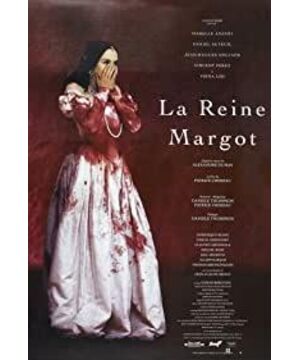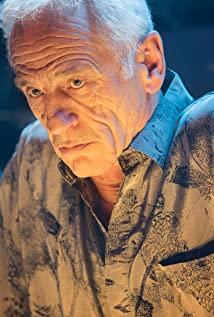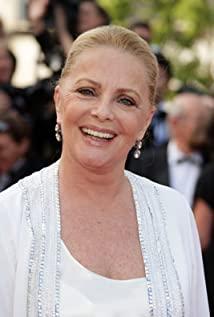Huguenot War Marguerite de Valois was born in 1553, the beginning of modern Europe. In that era, the women of the royal family were like treasures, waiting only for the right time to be sent to the right place for political transactions. Her father and mother, Henry II of France and Catherine de' Medici, were witnesses to the union of French and Roman church power; her eldest sister's marriage to Philip II of Spain marked the 65-year rivalry between France and Spain for Italy The end of the war; the second sister is married to the Duke of Lorraine, which is the bond between the royal family and the interests of the big family. Protestantism has flourished since Martin Luther protested against the Roman Church movement, and the Huguenots introduced from Switzerland took root in southern France. The Catholic and Protestant forces in France were at odds with each other, and the country was sprinkled with water like a frying pan. What's more troublesome is that in 1559, Henry II, who was in his prime, was stabbed in the eye and died in a contest. The eldest son, Francois II, who had just ascended the throne the following year, died of illness, and the second son, Charles IX, ascended the throne at the age of 10. . The main young country is suspicious. Moreover, the widowed mother Catherine de' Medici, who was in power, was an Italian and had no power of her own in France. Therefore, in order to maintain the stability of the dynasty, Margaret's mother hoped to marry her to the Protestant King Henry of Navarre in the south (he is also a member of the French royal family Bourbon family and has the qualifications to inherit the French throne). Because the mother of Henry of Navarre, Juana, was the spiritual leader of the Huguenots, this marriage had the intention of stabilizing the French Protestant forces and reconciling the contradiction between Catholicism and Protestantism. At the same time, in order to add weight to the Protestant side, slightly weaken the power of the Catholic leader Gies family. This idea is quite bold, because Margaret is Catholic, Henry of Navarra is Protestant, and believers of different denominations marry, even if it is a political marriage, it is unprecedented. After a long negotiation between the two sides of the massacre, it finally took place on August 18, 1572, when Margaret was 19 years old and Henry was 18 years old. they got married. A major issue negotiated by the two sides is that neither side needs to change their religious beliefs. Even so, there was a big problem: the Protestant King of Navarre was reluctant to walk into a Catholic church, much less attend a traditional Catholic wedding mass. Although the two parties later agreed that the wedding would be held on an open-air platform specially built outside the church. After the wedding ceremony, the bride entered the church to listen to the mass, and the groom and his entourage stayed outside the church. How irrational a wedding is. The wedding celebrations and carnival lasted for 4 days, but before people could relax, a notorious incident occurred slaughter. It turned out that although the Queen Mother's means of promoting Protestantism temporarily suppressed the arrogance of the Gies family, the gradually rising Protestant figures were not puppets. Their high-ranking minister at the royal court, Gaspard de Coligny, was not only the Minister of the Admiralty, but also the father-like figure most trusted by King Charles IX, who influenced France's foreign affairs decisions. Although France was defeated in the struggle with Spain, Spain was also caught in the quagmire of war at this time. The Netherlands, which had been a Spanish possession for a long time, rebelled under the banner of Protestantism. As a political figure in a neighboring country and a Protestant, Coligny, of course, strongly advocated sending troops to support the Dutch revolution. The Catholic forces in France, on the other hand, firmly regarded the Dutch as traitors, and wanted to unite with Spain to suppress the rebellion, or at least sit idly by. The Queen Mother Catherine, who was born in a famous Catholic family of the Medici family, was afraid that Charles IX would obey Coligny and send troops to aid the Netherlands against Spain, so she was determined to kill Coligny and the Huguenots who were preparing to fight. So on August 22, the Queen Mother sided with the Catholics again, and she instructed Henry of the Guises to send someone to assassinate Coligny. Coligny was seriously injured. The news reached the ears of the king's entourage who were attending the wedding, and the indignant Huguenots were gearing up to avenge Coligny. In order to avoid backlash, the king and the queen mother decided to strike first, and a few hours before dawn on St. Bartholomew's Day on August 24, they launched a hunt for the Protestants and killed all the Protestants in Paris. An estimated 5,000-6,000 people were killed in Paris alone, including women and children who were helpless. Over the next few days, the massacre spread across France and became a massive massacre. After the split and massacre, the Queen Mother wanted to announce to the public that the marriage was invalid because Margaret and Henry of Navarra did not consummate their marriage. The Queen Mother believed that since Margaret despised Henry, this suggestion would definitely gain Margaret's support. But she did not expect that Margaret resented her mother even more than she hated Henry. A large number of her subjects were killed during her wedding, and she knew that the Protestants were innocent. They were all guests who came to her wedding to celebrate her becoming Queen of Navarre, but were mercilessly betrayed. What's more, even if I cut myself off with Henry, one day I will be "sold" to other places by my mother and brother again. Who knows where the bad old man will be waiting for her at the next stop. She was at a romantic age, and Henry was young, so maybe it wasn't such a bad choice. So, with anger, pity, and anxiety, she chose to stand with Henry, and looked forward to the haze of the Holocaust dissipating Later, they can become a real couple. For Henry, though, it was much more difficult to accept Margaret. There is no need to say much about the blood feud of Catholics against Protestants. After the massacre, his entourage was wiped out, and he was stranded in the Paris court like a hostage, suffering humiliation. Especially when he saw his enemy, Henry of the Guise family, showing off his might in the court every day, he could only swallow his anger. He was resentful, never realizing his wife's intentions. He only regarded her as a spy placed by the royal family, and was very alienated from her. Only then did Margaret realize that she was alone from now on. In November, the rebellion in Huguenot resumed, and the king sent royal troops to pacify it. Henry of Navarre went with him. With her husband gone, Margaret experienced the joy of an aristocratic married woman. For Chinese readers, it was a matter of course for ancient women to keep "women's way" after they got married, but on the European aristocratic side, it was just the opposite. , the deal is done and women can "do whatever they want". Hosting salons, meeting young men, flirting, as long as you don't get divorced and break the contractual relationship between the two families, it's not a problem. Margaret was immersed in the game of joy and met the great love St. Joseph Berniface, that is, La Moore in the movie. He is not a Protestant, but a serious Catholic nobleman. Later, La Moor was executed for allegedly murdering the king, Charles IX died, his younger brother Henry Valois ascended the throne, the political situation in France was turbulent again, and King Henry of Navarre fled... Until the French war of religion broke out again, the battle of "Three Henrys" , the Bourbon family represented by King Henry of Navarre entered Paris, France entered the era of the Bourbon Dynasty, and Queen Margaret all participated in person. Especially the "Battle of Three Henrys", the three parties to the war were brother Henry, King of France, husband, King Henry of Navarre, and his early lover, Henry Duke of Guise. It is precisely because she is very important in the history of France, and is at the core of the relationship network in which various forces intersect and compete, attracting attention and slandering by thousands of people, leaving behind a dissolute, emotional and devastating "beauty". woe" image. It would take a whole book to tell the story of the real Margaret in history. The best read on this subject at present is Nancy Goldstone's The Two Queens of France. Although the author is not a "professional historian", it is rich in detail and brilliantly commented, which outlines Margaret's fall into religion, A lifetime of political and emotional whirlpools. Much harder. There is no need to say much about the blood feud of Catholics against Protestants. After the massacre, his entourage was wiped out, and he was stranded in the Paris court like a hostage, suffering humiliation. Especially when he saw his enemy, Henry of the Guise family, showing off his might in the court every day, he could only swallow his anger. He was resentful, never realizing his wife's intentions. He only regarded her as a spy placed by the royal family, and was very alienated from her. Only then did Margaret realize that she was alone from now on. In November, the rebellion in Huguenot resumed, and the king sent royal troops to pacify it. Henry of Navarre went with him. With her husband gone, Margaret experienced the joy of an aristocratic married woman. For Chinese readers, it was a matter of course for ancient women to keep "women's way" after they got married, but on the European aristocratic side, it was just the opposite. , the deal is done and women can "do whatever they want". Hosting salons, meeting young men, flirting, as long as you don't get divorced and break the contractual relationship between the two families, it's not a problem. Margaret was immersed in the game of joy and met the great love St. Joseph Berniface, that is, La Moore in the movie. He is not a Protestant, but a serious Catholic nobleman. Later, La Moor was executed for allegedly murdering the king, Charles IX died, his younger brother Henry Valois ascended the throne, the political situation in France was turbulent again, and King Henry of Navarre fled... Until the French war of religion broke out again, the battle of "Three Henrys" , the Bourbon family represented by King Henry of Navarre entered Paris, France entered the era of the Bourbon Dynasty, and Queen Margaret all participated in person. Especially the "Battle of Three Henrys", the three parties to the war were brother Henry, King of France, husband, King Henry of Navarre, and his early lover, Henry Duke of Guise. It is precisely because she is very important in the history of France, and is at the core of the relationship network in which various forces intersect and compete, attracting attention and slandering by thousands of people, leaving behind a dissolute, emotional and devastating "beauty". woe" image. It would take a whole book to tell the story of the real Margaret in history. The best read on this subject at present is Nancy Goldstone's The Two Queens of France. Although the author is not a "professional historian", it is rich in detail and brilliantly commented, which outlines Margaret's fall into religion, A lifetime of political and emotional whirlpools. Much harder. There is no need to say much about the blood feud of Catholics against Protestants. After the massacre, his entourage was wiped out, and he was stranded in the Paris court like a hostage, suffering humiliation. Especially when he saw his enemy, Henry of the Guise family, showing off his might in the court every day, he could only swallow his anger. He was resentful, never realizing his wife's intentions. He only regarded her as a spy placed by the royal family, and was very alienated from her. Only then did Margaret realize that she was alone from now on. In November, the rebellion in Huguenot resumed, and the king sent royal troops to pacify it. Henry of Navarre went with him. With her husband gone, Margaret experienced the joy of an aristocratic married woman. For Chinese readers, it was a matter of course for ancient women to keep "women's way" after they got married, but on the European aristocratic side, it was just the opposite. , the deal is done and women can "do whatever they want". Hosting salons, meeting young men, flirting, as long as you don't get divorced and break the contractual relationship between the two families, it's not a problem. Margaret was immersed in the game of joy and met the great love St. Joseph Berniface, that is, La Moore in the movie. He is not a Protestant, but a serious Catholic nobleman. Later, La Moor was executed for allegedly murdering the king, Charles IX died, his younger brother Henry Valois ascended the throne, the political situation in France was turbulent again, and King Henry of Navarre fled... Until the French war of religion broke out again, the battle of "Three Henrys" , the Bourbon family represented by King Henry of Navarre entered Paris, France entered the era of the Bourbon Dynasty, and Queen Margaret all participated in person. Especially the "Battle of Three Henrys", the three parties to the war were brother Henry, King of France, husband, King Henry of Navarre, and his early lover, Henry Duke of Guise. It is precisely because she is very important in the history of France, and is at the core of the relationship network in which various forces intersect and compete, attracting attention and slandering by thousands of people, leaving behind a dissolute, emotional and devastating "beauty". woe" image. It would take a whole book to tell the story of the real Margaret in history. The best read on this subject at present is Nancy Goldstone's The Two Queens of France. Although the author is not a "professional historian", it is rich in detail and brilliantly commented, which outlines Margaret's fall into religion, A lifetime of political and emotional whirlpools. Seeing his enemy, Henry of the Guise family, showing off his might in the palace, he could only swallow his anger. He was resentful, never realizing his wife's intentions. He only regarded her as a spy placed by the royal family, and was very alienated from her. Only then did Margaret realize that she was alone from now on. In November, the rebellion in Huguenot resumed, and the king sent royal troops to pacify it. Henry of Navarre went with him. With her husband gone, Margaret experienced the joy of an aristocratic married woman. For Chinese readers, it was a matter of course for ancient women to keep "women's way" after they got married, but on the European aristocratic side, it was just the opposite. , the deal is done and women can "do whatever they want". Hosting salons, meeting young men, flirting, as long as you don't get divorced and break the contractual relationship between the two families, it's not a problem. Margaret was immersed in the game of joy and met the great love St. Joseph Berniface, that is, La Moore in the movie. He is not a Protestant, but a serious Catholic nobleman. Later, La Moor was executed for allegedly murdering the king, Charles IX died, his younger brother Henry Valois ascended the throne, the political situation in France was turbulent again, and King Henry of Navarre fled... Until the French war of religion broke out again, the battle of "Three Henrys" , the Bourbon family represented by King Henry of Navarre entered Paris, France entered the era of the Bourbon Dynasty, and Queen Margaret all participated in person. Especially the "Battle of Three Henrys", the three parties to the war were brother Henry, King of France, husband, King Henry of Navarre, and his early lover, Henry Duke of Guise. It is precisely because she is very important in the history of France, and is at the core of the relationship network in which various forces intersect and compete, attracting attention and slandering by thousands of people, leaving behind a dissolute, emotional and devastating "beauty". woe" image. It would take a whole book to tell the story of the real Margaret in history. The best read on this subject at present is Nancy Goldstone's The Two Queens of France. Although the author is not a "professional historian", it is rich in detail and brilliantly commented, which outlines Margaret's fall into religion, A lifetime of political and emotional whirlpools. Seeing his enemy, Henry of the Guise family, showing off his might in the palace, he could only swallow his anger. He was resentful, never realizing his wife's intentions. He only regarded her as a spy placed by the royal family, and was very alienated from her. Only then did Margaret realize that she was alone from now on. In November, the rebellion in Huguenot resumed, and the king sent royal troops to pacify it. Henry of Navarre went with him. With her husband gone, Margaret experienced the joy of an aristocratic married woman. For Chinese readers, it was a matter of course for ancient women to keep "women's way" after they got married, but on the European aristocratic side, it was just the opposite. , the deal is done and women can "do whatever they want". Hosting salons, meeting young men, flirting, as long as you don't get divorced and break the contractual relationship between the two families, it's not a problem. Margaret was immersed in the game of joy and met the great love St. Joseph Berniface, that is, La Moore in the movie. He is not a Protestant, but a serious Catholic nobleman. Later, La Moor was executed for allegedly murdering the king, Charles IX died, his younger brother Henry Valois ascended the throne, the political situation in France was turbulent again, and King Henry of Navarre fled... Until the French war of religion broke out again, the battle of "Three Henrys" , the Bourbon family represented by King Henry of Navarre entered Paris, France entered the era of the Bourbon Dynasty, and Queen Margaret all participated in person. Especially the "Battle of Three Henrys", the three parties to the war were brother Henry, King of France, husband, King Henry of Navarre, and his early lover, Henry Duke of Guise. It is precisely because she is very important in the history of France, and is at the core of the relationship network in which various forces intersect and compete, attracting attention and slandering by thousands of people, leaving behind a dissolute, emotional and devastating "beauty". woe" image. It would take a whole book to tell the story of the real Margaret in history. The best read on this subject at present is Nancy Goldstone's The Two Queens of France. Although the author is not a "professional historian", it is rich in detail and brilliantly commented, which outlines Margaret's fall into religion, A lifetime of political and emotional whirlpools. . With her husband gone, Margaret experienced the joy of an aristocratic married woman. For Chinese readers, it was a matter of course for ancient women to keep "women's way" after they got married, but on the European aristocratic side, it was just the opposite. , the deal is done and women can "do whatever they want". Hosting salons, meeting young men, flirting, as long as you don't get divorced and break the contractual relationship between the two families, it's not a problem. Margaret was immersed in the game of joy and met the great love St. Joseph Berniface, that is, La Moore in the movie. He is not a Protestant, but a serious Catholic nobleman. Later, La Moor was executed for allegedly murdering the king, Charles IX died, his younger brother Henry Valois ascended the throne, the political situation in France was turbulent again, and King Henry of Navarre fled... Until the French war of religion broke out again, the battle of "Three Henrys" , the Bourbon family represented by King Henry of Navarre entered Paris, France entered the era of the Bourbon Dynasty, and Queen Margaret all participated in person. Especially the "Battle of Three Henrys", the three parties to the war were brother Henry, King of France, husband, King Henry of Navarre, and his early lover, Henry Duke of Guise. It is precisely because she is very important in the history of France, and is at the core of the relationship network in which various forces intersect and compete, attracting attention and slandering by thousands of people, leaving behind a dissolute, emotional and devastating "beauty". woe" image. It would take a whole book to tell the story of the real Margaret in history. The best read on this subject at present is Nancy Goldstone's The Two Queens of France. Although the author is not a "professional historian", it is rich in detail and brilliantly commented, which outlines Margaret's fall into religion, A lifetime of political and emotional whirlpools. . With her husband gone, Margaret experienced the joy of an aristocratic married woman. For Chinese readers, it was a matter of course for ancient women to keep "women's way" after they got married, but on the European aristocratic side, it was just the opposite. , the deal is done and women can "do whatever they want". Hosting salons, meeting young men, flirting, as long as you don't get divorced and break the contractual relationship between the two families, it's not a problem. Margaret was immersed in the game of joy and met the great love St. Joseph Berniface, that is, La Moore in the movie. He is not a Protestant, but a serious Catholic nobleman. Later, La Moor was executed for allegedly murdering the king, Charles IX died, his younger brother Henry Valois ascended the throne, the political situation in France was turbulent again, and King Henry of Navarre fled... Until the French war of religion broke out again, the battle of "Three Henrys" , the Bourbon family represented by King Henry of Navarre entered Paris, France entered the era of the Bourbon Dynasty, and Queen Margaret all participated in person. Especially the "Battle of Three Henrys", the three parties to the war were brother Henry, King of France, husband, King Henry of Navarre, and his early lover, Henry Duke of Guise. It is precisely because she is very important in the history of France, and is at the core of the relationship network in which various forces intersect and compete, attracting attention and slandering by thousands of people, leaving behind a dissolute, emotional and devastating "beauty". woe" image. It would take a whole book to tell the story of the real Margaret in history. The best read on this subject at present is Nancy Goldstone's The Two Queens of France. Although the author is not a "professional historian", it is rich in detail and brilliantly commented, which outlines Margaret's fall into religion, A lifetime of political and emotional whirlpools. The political situation was turbulent again, King Henry of Navarre fled... Until the French war of religion broke out again, the battle of "Three Henrys", the Bourbon family represented by King Henry of Navarre entered Paris, France entered the era of the Bourbon Dynasty, Margaery All the queens were personally involved. Especially the "Battle of Three Henrys", the three parties to the war were brother Henry, King of France, husband, King Henry of Navarre, and his early lover, Henry Duke of Guise. It is precisely because she is very important in the history of France, and is at the core of the relationship network in which various forces intersect and compete, attracting attention and slandering by thousands of people, leaving behind a dissolute, emotional and devastating "beauty". woe" image. It would take a whole book to tell the story of the real Margaret in history. The best read on this subject at present is Nancy Goldstone's The Two Queens of France. Although the author is not a "professional historian", it is rich in detail and brilliantly commented, which outlines Margaret's fall into religion, A lifetime of political and emotional whirlpools. The political situation was turbulent again, King Henry of Navarre fled... Until the French war of religion broke out again, the battle of "Three Henrys", the Bourbon family represented by King Henry of Navarre entered Paris, France entered the era of the Bourbon Dynasty, Margaery All the queens were personally involved. Especially the "Battle of Three Henrys", the three parties to the war were brother Henry, King of France, husband, King Henry of Navarre, and his early lover, Henry Duke of Guise. It is precisely because she is very important in the history of France, and is at the core of the relationship network in which various forces intersect and compete, attracting attention and slandering by thousands of people, leaving behind a dissolute, emotional and devastating "beauty". woe" image. It would take a whole book to tell the story of the real Margaret in history. The best read on this subject at present is Nancy Goldstone's The Two Queens of France. Although the author is not a "professional historian", it is rich in detail and brilliantly commented, which outlines Margaret's fall into religion, A lifetime of political and emotional whirlpools.
View more about Queen Margot reviews











